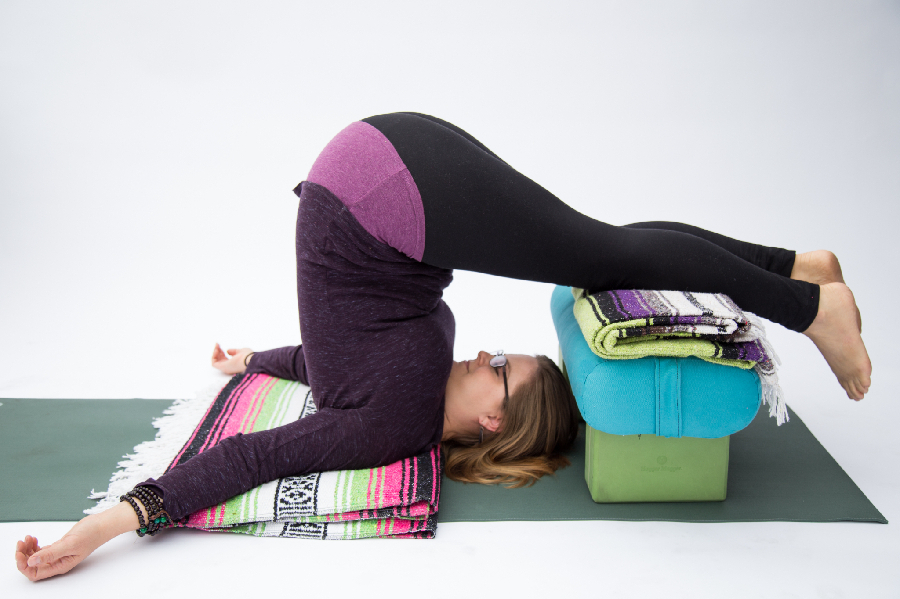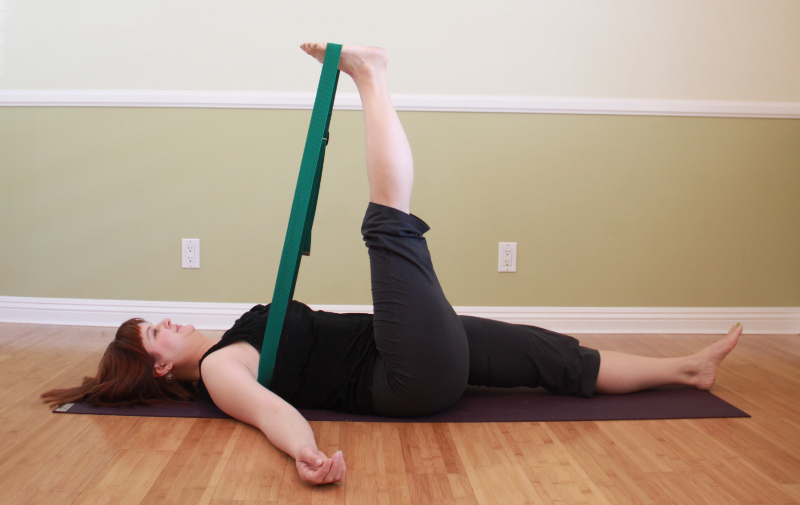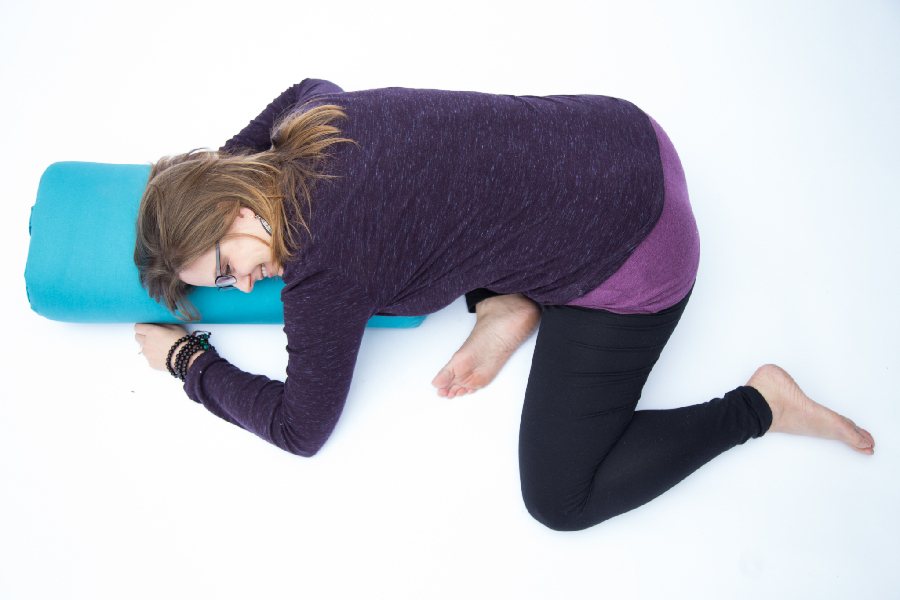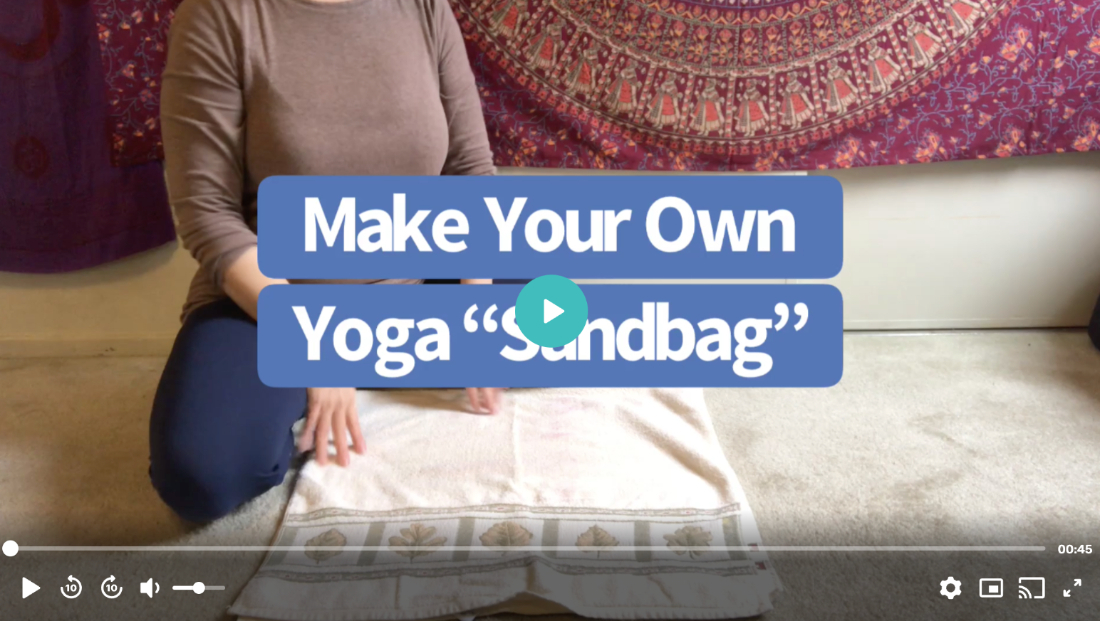Yin Yoga Props: My Recommendations and Tips
Blankets, blocks, bolsters, straps, chairs, massage balls, sandbags…welcome to the wonderful world of Yin Yoga with props!
As a long-time practitioner, I’ve definitely felt the difference that props can make through the ease and support they bring to the practice. And, as a Yoga Therapist with over a decade of experience teaching Yin Yoga to others, I know that props are a big part of receiving the full benefit that each pose has to offer.
Why use props in Yin Yoga?
Not all yoga classes require props, but many can be enhanced by including them – especially when you’re practicing in the Yin Yoga or Restorative Yoga styles.
In Yin Yoga, props can help:
- make poses safer, more comfortable, and accessible
- improve your alignment within a pose and so that you target the intended area of the body for your Yin stretch
- encourage a sense of ease to calm your nervous system, creating a more meditative state
- give tactile feedback to the body so that you feel what you’re doing even more clearly.
Building Your Prop Collection
You can start with a few essentials and build your prop collection over time – no need to invest in everything all at once. Another budget-friendly option is to look for suitable prop substitutions around your home.
You’ll find my suggestions below for how to prioritize your prop purchases, or how to use what you already have around (that could also get you on your mat faster!).
What Yin Yoga props should you start with?
A good place to start is with a mat, two blocks, a long strap, and a few blankets.
Blocks – I suggest foam or cork blocks. Foam is softer and lighter, and cork is sturdier, depending on your preference. The blocks I use are made by Hugger Mugger, and they are a good happy medium – foam, but firm. The firmness is helpful when you use the blocks in more active yoga practices, because it helps make your poses more stable.
Sometimes people use stacks of books, or empty Tupperware containers instead of real yoga blocks. But, if you’re going to invest in anything (beyond your basic mat), I would start with blocks because of how many ways they can be used in Yin Yoga and all other styles.
Strap – My recommendation is a 10-foot long yoga strap. Yeah, it’s really long, but the extra length gives you great versatility! I also prefer the metal D-Ring buckles over the plastic clasps. These longer straps can help you do hands-free stretches in Yin Yoga, like the one pictured here.
That said, you can often substitute a resistance band (a common piece of workout equipment) if you already have one. I also suggest looking in your closet for a scarf (yes, the kind you’d wear around your neck in winter!). These household items work fine in place of a strap, you just might not be able to wrap it all the way around or cinch it in place.
Blankets – It’s possible that you already have thick, foldable blankets at home that you can use. A bath towel can also make a good yoga blanket. Or, you can purchase yoga blankets (or colorful Mexican blankets) from a variety of sources online. The advantage of using blankets that are specifically for yoga is that they are often made so that they fold to a particular shape and size, matching the length of your yoga mat and providing a certain thickness.
Yin Yoga Props Beyond the Basics
Once you have the basics, you can add to your prop collection over time, based on your needs and interests. If you’re into Yin Yoga (or Restorative Yoga), you’ll probably want to invest in a bolster sooner rather than later.
Bolsters – Look for a flat rectangular style (rather than round) – it will be the most versatile for you. Make sure you get “standard” size, not “junior” or “pranayama” (these will be narrower).
Bolsters can be more expensive than most Yin Yoga props, so that’s why I put them here in the “beyond the basics” list. If you don’t have a bolster yet, you can often use a stack of blankets instead, or roll up your yoga mat to lie on for supported backbends.
Massage Balls – Rubber massage balls can be a great complement to your Yin Yoga practice, to help relieve tension and promote awareness. Massage balls can also be used to stimulate energy along the meridian lines, as part of a Yin Yoga practice. I use soft therapy balls with a slightly grippy rubber surface, but you can use similar rubber high-bounce balls (“pinky balls”) from the toy store, or even tennis balls.
Yoga Sandbags – If you want to get extra luxurious, you can make yourself some yoga sandbags. I order empty sandbag covers from Amazon and fill them at home (rather than paying for the shipping on a 10 lb bag of sand). Look for sandbags that have an inner liner, to prevent sand leaking out. Personally, I fill my sandbags with rice…the grains are too large to seep through the zipper, and it works great!
Or, you can make your own sandbag at home for free with a towel and a bag of rice. Here’s a little tutorial video I made that shows you how!
Yoga Chairs – Lastly, a yoga chair can be helpful in some therapeutic yoga classes. There are special “yoga chairs” you can buy – they tend to be backless and have the lower front rung removed. But, for most purposes, you’ll be fine with a regular folding chair or dining room chair. As long as your chair is sturdy, and (preferably) doesn’t have arms or wheels, it should work!
More Resources
If your interest is piqued, and you’d like to learn more about using Yin Yoga props, check out my online course! The 8-hour Yin Yoga Poses + Props Training covers an extensive repertoire of Yin Yoga poses, with an emphasis on how to use props to maximize the benefits of the practice.
It includes tutorial videos for 24 Yin poses, with details on cueing, propping, contraindications, and the energy meridians affected, plus five lectures explaining how and why we use props like blankets, bolsters, and blocks in Yin Yoga.
It’s an easy-to-use self-paced course, and Yoga Alliance CEUs are available for teachers.




